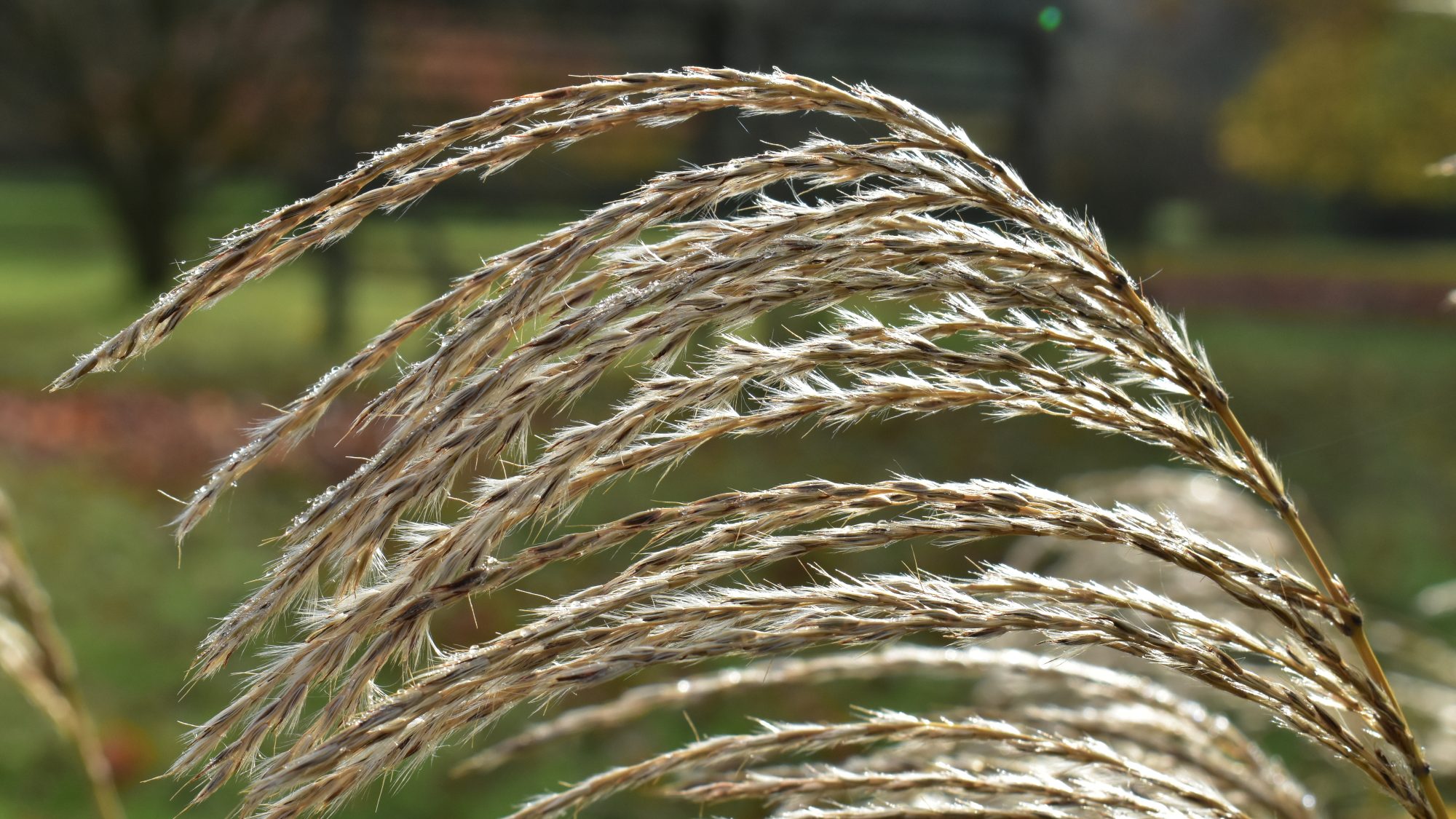The plume-like flowers of this perennial grass are providing late season herbaceous interest on the Chronological Bed.
Numbering 20 species, the genus Miscanthus belongs to the grass family (Poaceae), and originates from eastern Asia and Africa. All species have stiff, reed-like stems, narrow, folded leaves, and terminal panicles of silky spikelets, and enjoy moist, well-drained and moderately fertile conditions. This one, Miscanthus sinensis, is a native of east Asia, and produces dense clumps of arching foliage with a prominent, silvery midrib, and soft, maroon-tinted panicles of inflorescence to 4m in height. This is a valuable late-flowering species, which will continue to provide interest throughout winter. Introduced to our gardens in the late 1800’s, M. sinensis has given rise to a number of widely grown selections, including ‘Gracillimus’ and ‘Kleine Silberspinne’.

